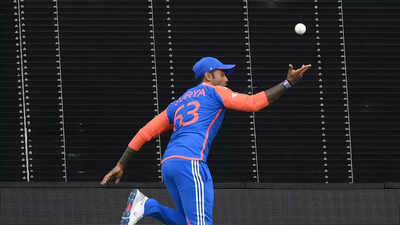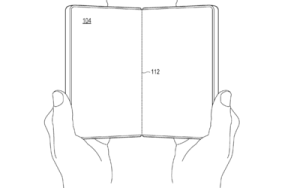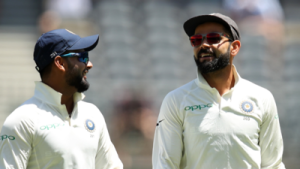The International Cricket Council (ICC) has announced a series of key changes to the playing conditions across Test, ODI, and T20I cricket formats. These revisions address issues such as over rates, ball management, boundary catches, concussion protocols, and wide ball definitions.
 *Image credit: ICC*
*Image credit: ICC*
To tackle the persistent problem of slow over rates, the stop clock rule, previously tested in white-ball cricket, will now be permanently enforced in Test matches. The fielding team must commence the next over within 60 seconds of the completion of the previous one. Teams will be given two warnings per innings, with subsequent violations incurring a five-run penalty. These warnings will be reset every 80 overs, coinciding with the availability of a new ball.
In One Day Internationals (ODIs), the rule regarding ball usage has been altered. The use of two balls will now be restricted to the first 34 overs. For the remaining 16 overs, the fielding side will be able to select one of the two balls to continue play. This adjustment is designed to better manage the wear and tear of the ball.
The regulations surrounding boundary catches have been clarified. Fielders making airborne contact with the ball while positioned beyond the boundary must ensure that their final point of contact with the ground is entirely within the field of play to complete a legal catch. If a fielder steps outside the boundary and jumps again, they are permitted only one additional touch before landing inside the boundary.
The ICC has strengthened its concussion protocols. Teams will now be required to pre-nominate concussion substitutes. Any player diagnosed with a concussion will be subject to a mandatory seven-day rest period before being permitted to return to competitive play.
A new wide ball rule will be trialed in white-ball formats. The batter’s position at the time of the delivery – not their subsequent movements – will be the determining factor in judging wides. Deliveries passing between the leg stump and the extended protected area marker at the popping crease will no longer be called wide. However, deliveries passing behind the batter's legs may still be deemed wide. To aid umpires, the protected area marker will be extended to the popping crease, providing a visual reference.
The Decision Review System (DRS) will be enhanced to improve the accuracy of LBW decisions. The actual physical outline of the stumps and bails will now be used to define the wicket zone.
In addition to the existing five-run penalty for a deliberate short run, the fielding team will now have the option to choose which batter takes strike for the next delivery.
In domestic first-class cricket, if a player sustains a serious on-field injury at any point after the match has commenced (including during warm-ups), they can be replaced by a like-for-like player for the remainder of the game.
The new Test playing conditions came into effect from the Sri Lanka vs Bangladesh Test on June 17. The revised ODI and T20I rules will be implemented starting with the first ODI on July 2 and the T20Is from July 10 in the same series. All international matches played after these dates will be governed by the updated regulations.
Newer articles
Older articles
 Vitamin D Could Slash Tooth Decay Risk by 50%, Study Suggests
Vitamin D Could Slash Tooth Decay Risk by 50%, Study Suggests
 Indian Cricket Star Mukesh Kumar and Wife Divya Singh Announce Birth of Son
Indian Cricket Star Mukesh Kumar and Wife Divya Singh Announce Birth of Son
 Shubman Gill's Captaincy Under Fire: Bold Calls Needed After England Test Defeat
Shubman Gill's Captaincy Under Fire: Bold Calls Needed After England Test Defeat
 Microsoft Aims for Foldable Redemption with Novel Hinge Design to Rival iPhone and Android
Microsoft Aims for Foldable Redemption with Novel Hinge Design to Rival iPhone and Android
 Popular Finance YouTuber's Account Hacked, Bitcoin Scam Promoted: Security Lessons Learned
Popular Finance YouTuber's Account Hacked, Bitcoin Scam Promoted: Security Lessons Learned
 Esha Gupta Breaks Silence on Hardik Pandya Romance Rumors: 'We Were Just Talking'
Esha Gupta Breaks Silence on Hardik Pandya Romance Rumors: 'We Were Just Talking'
 Hollywood's Love Affair with India: Iconic Film Locations Revealed
Hollywood's Love Affair with India: Iconic Film Locations Revealed
 Rishabh Pant Aims to Surpass Virat Kohli in Test Century Tally During England Series
Rishabh Pant Aims to Surpass Virat Kohli in Test Century Tally During England Series
 Prithvi Shaw Credits Sachin Tendulkar's Guidance for Career Revival After Setbacks
Prithvi Shaw Credits Sachin Tendulkar's Guidance for Career Revival After Setbacks
 Ashada Gupt Navratri 2025: Unveiling Dates, Timings, Significance & Secret Rituals
Ashada Gupt Navratri 2025: Unveiling Dates, Timings, Significance & Secret Rituals